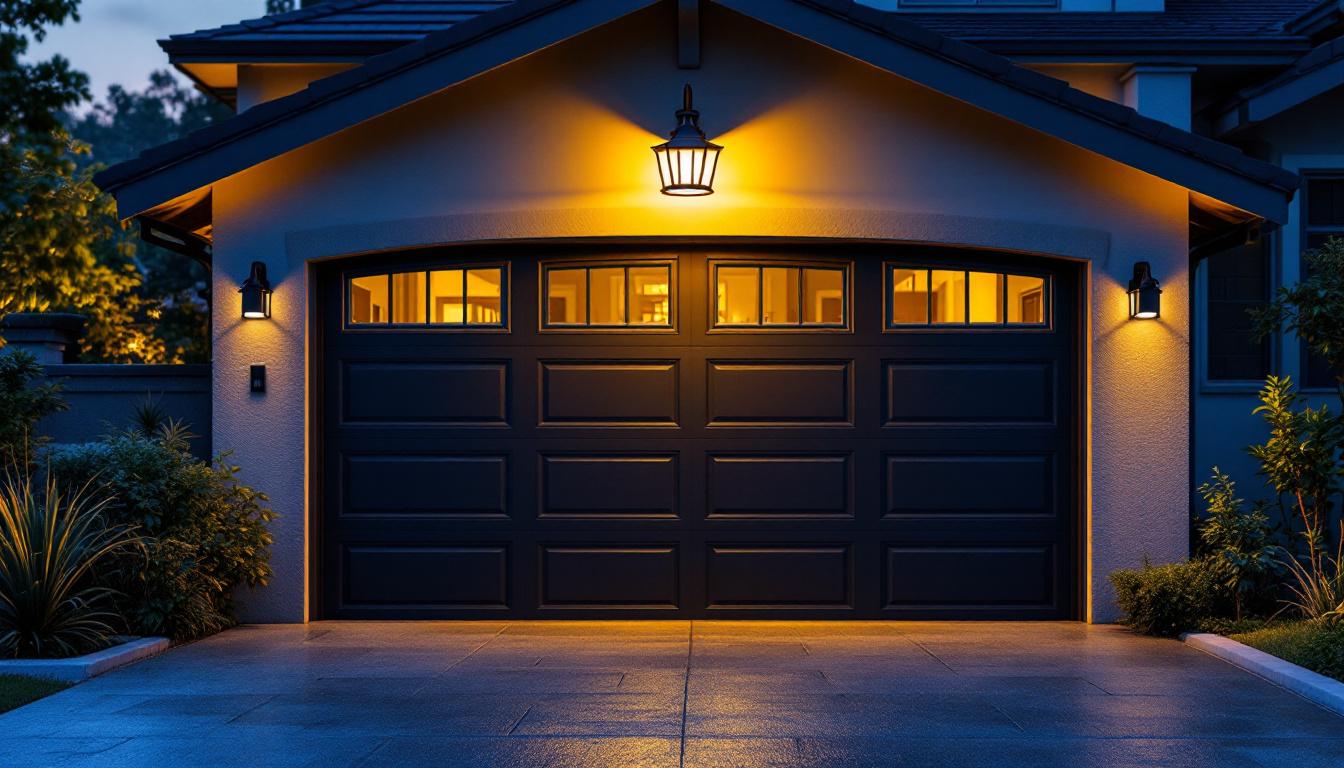
Motion sensor lighting has gained significant traction in both residential and commercial settings. These systems offer enhanced security, energy efficiency, and convenience, making them an attractive option for many clients. However, despite their popularity, there are several aspects that lighting contractors often overlook when recommending or installing these systems.
This article delves into the common oversights that can impact the effectiveness and satisfaction of motion sensor lighting installations. By addressing these points, lighting contractors can provide better service and ensure that clients receive the full benefits of their investment.
One crucial factor that contractors often miss is the placement of the motion sensors themselves. Proper positioning is essential for maximizing the detection range and minimizing false triggers. For instance, sensors should be installed at a height that allows them to cover the intended area effectively while avoiding obstructions such as trees, fences, or even the building’s own architecture. Additionally, understanding the specific needs of the environment—whether it be a busy commercial parking lot or a quiet residential backyard—can help tailor the installation to ensure optimal performance.
Another aspect worth considering is the integration of motion sensor lighting with smart home technology. As more homeowners embrace smart devices, the ability to connect motion sensors to a central hub or app can enhance the user experience significantly. This integration allows for customizable settings, such as adjusting sensitivity levels or creating schedules for when lights should activate. Furthermore, it can provide users with notifications when motion is detected, adding an extra layer of security. By educating clients on these advanced features, contractors can elevate their service offerings and help clients make informed decisions about their lighting solutions.
Before diving into the common oversights, it is crucial to understand how motion sensor technology works. Motion sensors typically use one of three primary technologies: passive infrared (PIR), ultrasonic, or dual technology. Each type has its strengths and weaknesses, which can significantly affect performance in different environments.
PIR sensors detect changes in infrared radiation, which is emitted by all objects, including humans and animals. They are most effective in detecting movement across their field of view. However, they can be less effective in environments with significant temperature variations or when the sensor is installed at an inappropriate height. For instance, a PIR sensor placed near a window may be triggered by the heat from sunlight, leading to false alarms. Additionally, the positioning of these sensors is critical; they should ideally be mounted at a height that allows for optimal detection of human movement while minimizing interference from nearby objects.
Ultrasonic sensors emit high-frequency sound waves and measure the reflection of these waves to detect movement. They can cover a larger area than PIR sensors and are less affected by temperature changes. However, they can be triggered by non-human movement, such as pets, which may lead to unwanted activations. Furthermore, ultrasonic sensors can be particularly beneficial in environments with obstacles, as their sound waves can navigate around objects, providing a more comprehensive coverage. This makes them ideal for applications in warehouses or retail spaces where the layout may obstruct the line of sight.
Combining both PIR and ultrasonic technologies, dual technology sensors offer a more reliable solution by reducing false alarms. They require both technologies to detect motion, making them suitable for various applications. However, they can be more expensive and complex to install. The integration of these two technologies not only enhances accuracy but also allows for adaptability in diverse settings, such as offices or homes where both human and pet movements need to be monitored. Moreover, dual technology sensors often come equipped with advanced features like adjustable sensitivity settings and programmable zones, enabling users to customize their motion detection systems according to specific needs and environments.
Even with a solid understanding of motion sensor technology, contractors can still make mistakes during installation. Here are some common oversights that can compromise the effectiveness of motion sensor lighting systems.
One of the most critical factors in the effectiveness of motion sensors is their placement. Sensors should be positioned to maximize their field of view while minimizing obstructions. Installing sensors too high can reduce their sensitivity, while placing them in areas with frequent movement from pets or other objects can lead to false alarms.
Additionally, contractors should consider the angle of the sensor. A sensor that is not angled correctly may miss movement entirely. It is essential to conduct a thorough assessment of the area before installation to identify the optimal locations for sensors.
Environmental factors can significantly impact the performance of motion sensors. For instance, heavy foliage, walls, or other obstacles can obstruct the sensor’s field of view, leading to reduced effectiveness. Lighting contractors should evaluate the surroundings and consider potential obstructions when determining sensor placement.
Moreover, temperature fluctuations can affect the performance of PIR sensors, as they rely on detecting changes in infrared radiation. Contractors should be aware of the specific environment in which the sensors will be installed and choose the appropriate technology accordingly.
Every client has unique needs and preferences when it comes to lighting. Contractors should engage with clients to understand their expectations and how they plan to use the motion sensor lighting. For example, some clients may prefer a longer delay before the lights turn off, while others may want immediate activation.
Failure to consider user preferences can lead to dissatisfaction with the lighting system. It is essential to involve clients in the decision-making process to ensure that the final installation meets their expectations and enhances their experience.
Energy efficiency is one of the primary benefits of motion sensor lighting. However, contractors often overlook critical factors that can maximize energy savings. By addressing these considerations, contractors can help clients achieve greater efficiency and cost savings.
The choice of light bulbs can significantly impact energy consumption. LED bulbs are the most energy-efficient option, consuming significantly less power than traditional incandescent or halogen bulbs. Lighting contractors should recommend LED options to clients, emphasizing their longevity and lower operating costs.
Additionally, contractors should educate clients about the importance of selecting bulbs with appropriate brightness levels. Overly bright bulbs can lead to wasted energy and may be uncomfortable for users. Finding the right balance between brightness and energy efficiency is key.
Many motion sensors come with adjustable settings that allow users to customize sensitivity and duration. Contractors should take the time to explain these features to clients, ensuring they understand how to optimize their systems for energy efficiency. For instance, reducing the sensitivity can prevent unnecessary activations, while adjusting the duration can minimize energy consumption.
By encouraging clients to utilize these settings, contractors can help them achieve greater energy savings and enhance the overall effectiveness of their motion sensor lighting systems.
Regular maintenance is essential for ensuring the longevity and effectiveness of motion sensor lighting systems. However, this aspect is often overlooked by both contractors and clients. Establishing a maintenance routine can prevent issues and ensure optimal performance over time.
Dust, dirt, and debris can accumulate on motion sensors, obstructing their field of view and reducing sensitivity. Contractors should advise clients on the importance of regularly cleaning sensors to maintain optimal performance. A simple wipe with a soft cloth can make a significant difference.
In addition to cleaning, contractors should recommend periodic checks of the entire lighting system to ensure all components are functioning correctly. This proactive approach can help identify potential issues before they become significant problems.
As technology advances, older motion sensor systems may become outdated. Lighting contractors should stay informed about the latest developments in motion sensor technology and recommend upgrades to clients when necessary. Newer models often come with enhanced features, improved energy efficiency, and better reliability.
Encouraging clients to invest in updated technology can lead to increased satisfaction and improved performance of their lighting systems. It also reflects positively on the contractor’s expertise and commitment to providing the best solutions.
With the rise of smart home technology, integrating motion sensor lighting with other smart systems has become increasingly popular. However, contractors may overlook the potential benefits of this integration, which can enhance user experience and convenience.
Many modern motion sensors are designed to be compatible with smart home systems, allowing users to control their lighting remotely or set schedules through mobile apps. Contractors should educate clients about the advantages of integrating motion sensor lighting with their existing smart devices.
By highlighting the convenience and flexibility of smart integration, contractors can help clients make informed decisions that enhance their overall lighting experience.
Integrating motion sensor lighting with smart home security systems can provide an added layer of protection. For instance, motion-activated lights can be programmed to alert homeowners when movement is detected, enhancing overall security. Contractors should discuss these options with clients, emphasizing the benefits of a comprehensive security system.
By offering solutions that combine motion sensor lighting with smart security features, contractors can position themselves as knowledgeable professionals who prioritize client safety and satisfaction.
Motion sensor lighting systems offer numerous benefits, but lighting contractors must be aware of common oversights that can impact their effectiveness. By understanding the technology, ensuring proper installation, considering energy efficiency, and emphasizing maintenance, contractors can enhance the performance of motion sensor lighting systems.
Furthermore, integrating these systems with smart home technology can provide clients with added convenience and security. By addressing these often-overlooked aspects, lighting contractors can deliver exceptional service and ensure that clients enjoy the full benefits of their motion sensor lighting investments.
In a rapidly evolving industry, staying informed and proactive can set contractors apart, leading to greater client satisfaction and long-term success.
Don’t let common oversights dim the potential of your motion sensor lighting projects. Choose LumenWholesale for your lighting needs and experience the difference that quality and value can make. Our extensive selection of spec-grade lighting products ensures that you have access to the best technology without the burden of inflated costs. With free shipping on bulk orders, you can equip your installations with the most reliable and energy-efficient options available. Elevate your service offerings and delight your clients with the perfect blend of performance and affordability. Take the first step towards better lighting solutions and visit Wholesale Lighting at the Best Value today.

Discover the key insights lighting contractors need to meet client expectations when it comes to cheap LED bulbs.

Discover how installing exterior lights above garage doors can enhance curb appeal and boost property value.

Discover the essential guide to light bulb brightness with our comprehensive chart designed specifically for lighting contractors.

Discover expert tips on fluorescent closet lights from lighting contractors.